Xàtiva – Alcoi
CHARACTERISTICS
- Estación de Xàtiva (UTM 30S 714388 4318825); (P.K. 0,000) / Viajeros
- Estación del Genovés (UTM 30S 718273 4318433); (P.K. 5,800) / Viajeros
- Estación de Benigànim (UTM 30S 720726 4313036); (P.K. 13,000) / Viajeros
- Estación de La Pobla del Duc (UTM 30S 720817 4309606); (P.K. 17,600) / Viajeros
- Estación de Montaverner (UTM 30S 717578 4306906); (P.K. 23,500) / Viajeros
- Estación de Bufali (UTM 30S 715989 4305008); (P.K. 26,300) / Viajeros
- Estación de Albaida (UTM 30S 715378 4302581); (P.K. 29,300) / Viajeros
- Estación de Agullent (UTM 30S 712565 4300819); (P.K. 32,600) / Viajeros
- Estación de Onteniente (UTM 30S 708171 4298367); (P.K. 38,200) / Viajeros
- Estación de Agres (UTM 30S 715225 4297149); (P.K. 47,800) / Viajeros
- Estación de Cocentaina (UTM 30S 721427 4292750); (P.K. 59,200) / Viajeros
- Estación de Alcoy (UTM 30S 719963 4287578); (P.K. 63,700) / Viajeros
At the end of the 19th century, Alcoy had a thriving industry in sectors such as metallurgy, textiles and paper. However, the difficult terrain limited its development by making it difficult to distribute products and to supply coal to power the steam engines. For this reason, various railway projects emerged during those years that allowed Alcoy to be connected to Xàtiva and the port of Gandía.
The concession for the construction of the Alcoy-Xátiva line was awarded in 1887 to the AVT (Sociedad de los Ferrocarriles de Almansa a Valencia y Tarragona), which nevertheless went bankrupt a few years later following the death of its owner and difficulties with the construction due to the complex orography of the terrain. [1]
The concession for the construction of the Alcoy-Xátiva line was awarded in 1887 to the Almansa to Valencia and Tarragona Railway Company [...]
The concession passed into the hands of the Compañía de los Caminos de Hierro del Norte de España, CCHNE, which had interests in the area. This company relaunched the project, defining the final route between Alcoy and Xátiva, the latter being the point of connection with one of its lines, the one that connects Valencia with Almansa. The works were completed in 1904. [1] [2]
Extending the line to the port of Alicante was a possibility that was studied at length for years, and was finally included in the Guadalhorce Plan (Preferred Plan for Urgently Needed Railway Construction) of 1926. Despite the fact that several works were carried out, the tracks were never laid, leaving the project unfinished. [3]
RENFE became the owner of the line in 1941, after the nationalisation of the Iberian gauge railways. In 2005, after the separation of RENFE Operadora and ADIF, the line came under the control of the latter. Currently, the line offers the Media Distancia service that covers the Valencia-Xátiva-Alcoy route. [1]
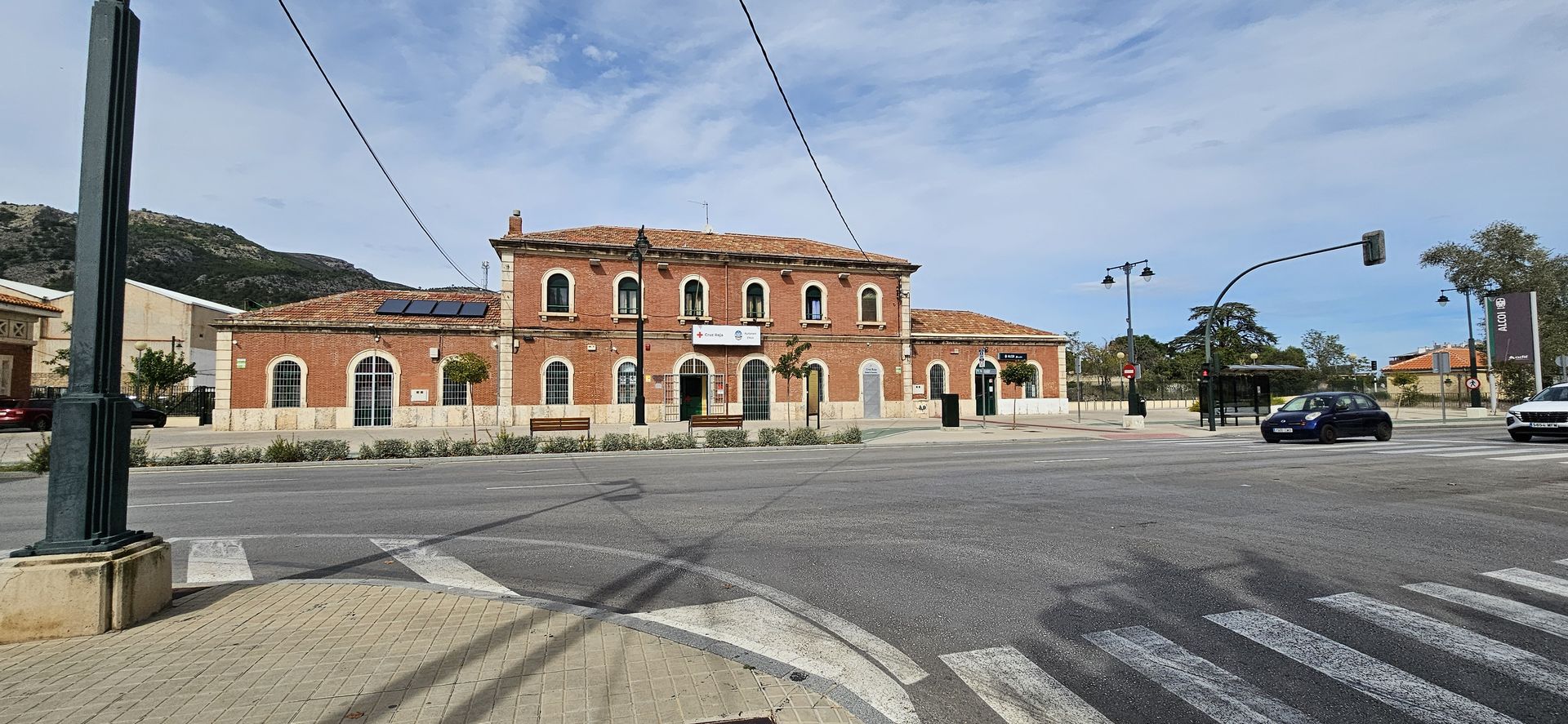
Estación de Alcoy (Alicante)
The current state of this line is one of deficit, as it retains old infrastructure that has not been renovated, which explains why it is the line with the lowest top speeds in the whole of Spain. [4]
Furthermore, although the stations at Alcoy, Onteniente, Albaida and Benigànim are still open, they need refurbishment to improve conditions for passengers. [1]
In 1941, with the nationalisation of the Iberian gauge railway, the line became part of the RENFE network.
Finally, it is important to mention that Adif announced on 21 September 2023 that it will invest more than 101 million euros in works to renovate all the elements of the superstructure such as the rail, the sleepers, the ballast and the track apparatus, with the aim of increasing the efficiency and reliability of the track and the speed of traffic to reduce journey times. [5] [6]
Finally, it is important to mention that Adif announced on 21 September 2023 that it will invest more than 101 million euros [...] to reduce travel times.
Despite its short length, the line passes through a large number of landscapes. It transversally crosses several ridges and valleys that make up the mountain ranges of Grana, Mariola and Safor. This is why the line is very rugged and difficult to access. It is a section of numerous perceptive contrasts and rich in viewpoints. The mountainous area contrasts notably with that of the Albaida valley, made up of varied and medium-sized fields.
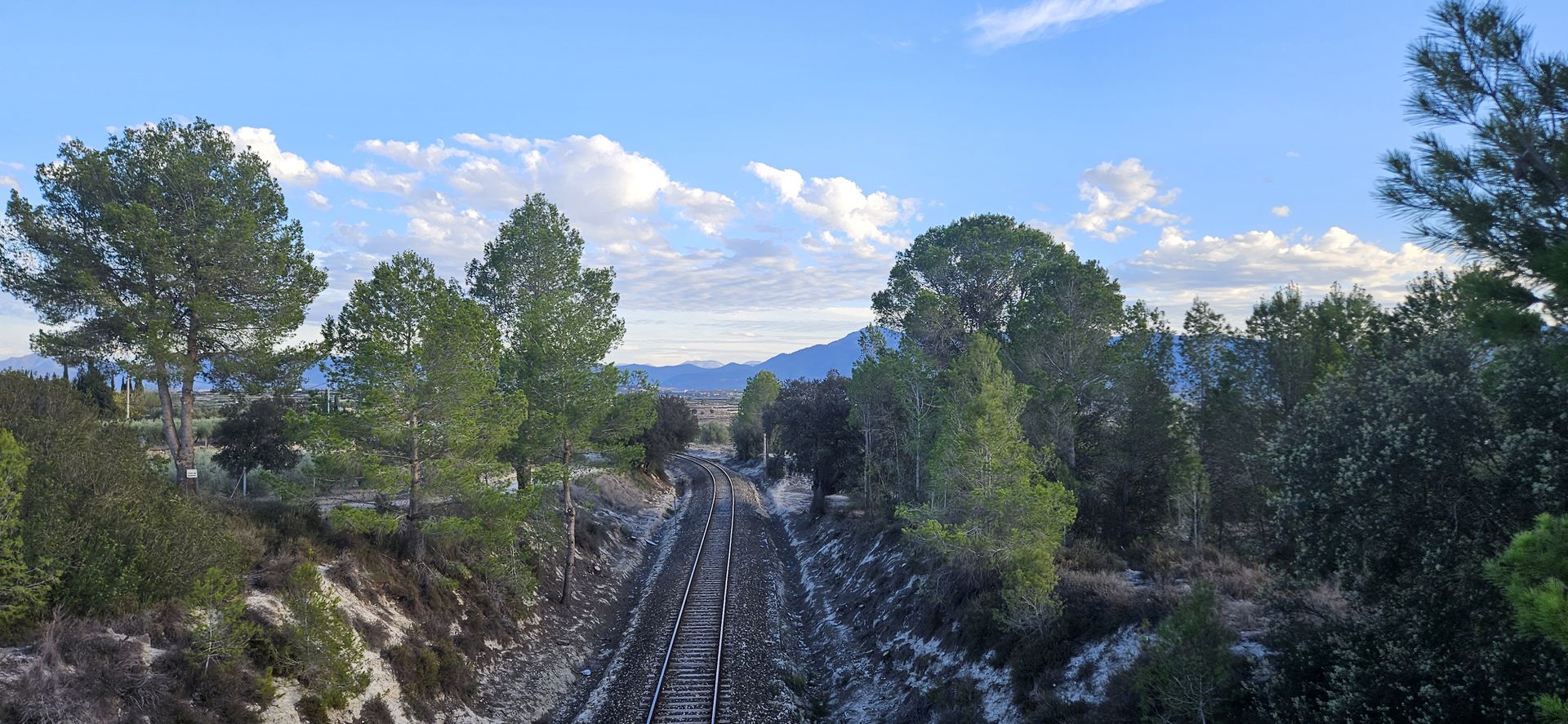
Vista superior de la Línea 342
The line starts and ends at two urban stations, both large and in perfect condition. The Xátiva station stands out for its uniqueness, being large and offering numerous services. Even so, other stations in very good condition and fully functional have been observed along the line, such as in Ontinyent or Benigànim.Likewise, in Montaverner and, above all, in Genovés, the halting places have been successfully renovated and are well maintained. There are two stations that have potential for reuse and linking with tourist uses. One is the aforementioned Benigànim, which has underused parts and interesting old buildings around it. Moreover, it is within the town. The other is Albaida, whose interesting location within the town, although somewhat separated due to its location at a lower level, gives it a unique appeal. Moreover, despite its abandonment, it is in a state that would allow for its rehabilitation with little investment. The surrounding buildings of this station are also of interest.
[...] despite its abandonment, it is in a state that would allow for its rehabilitation with little investment.
The line is in good general condition, although there are sections that appear to be abandoned and some dilapidated stations. However, the quality of the landscape along the entire route is remarkable, with surprising changes in the orography and a great wealth of plant life.
Category C1.
Non-electrified track with wooden sleepers in need of repair.
Photographic report
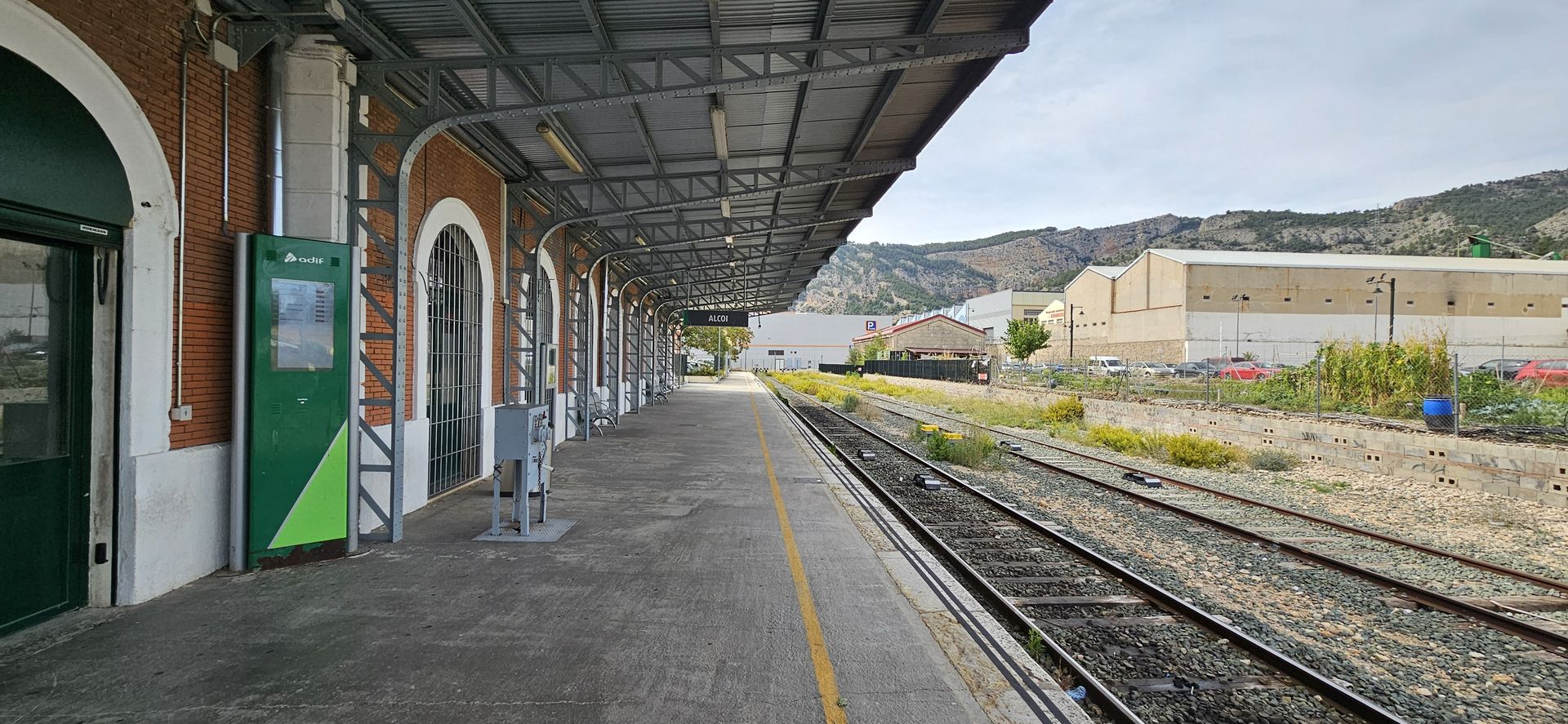
Vista de los andenes en la estación de Alcoy (Alicante)
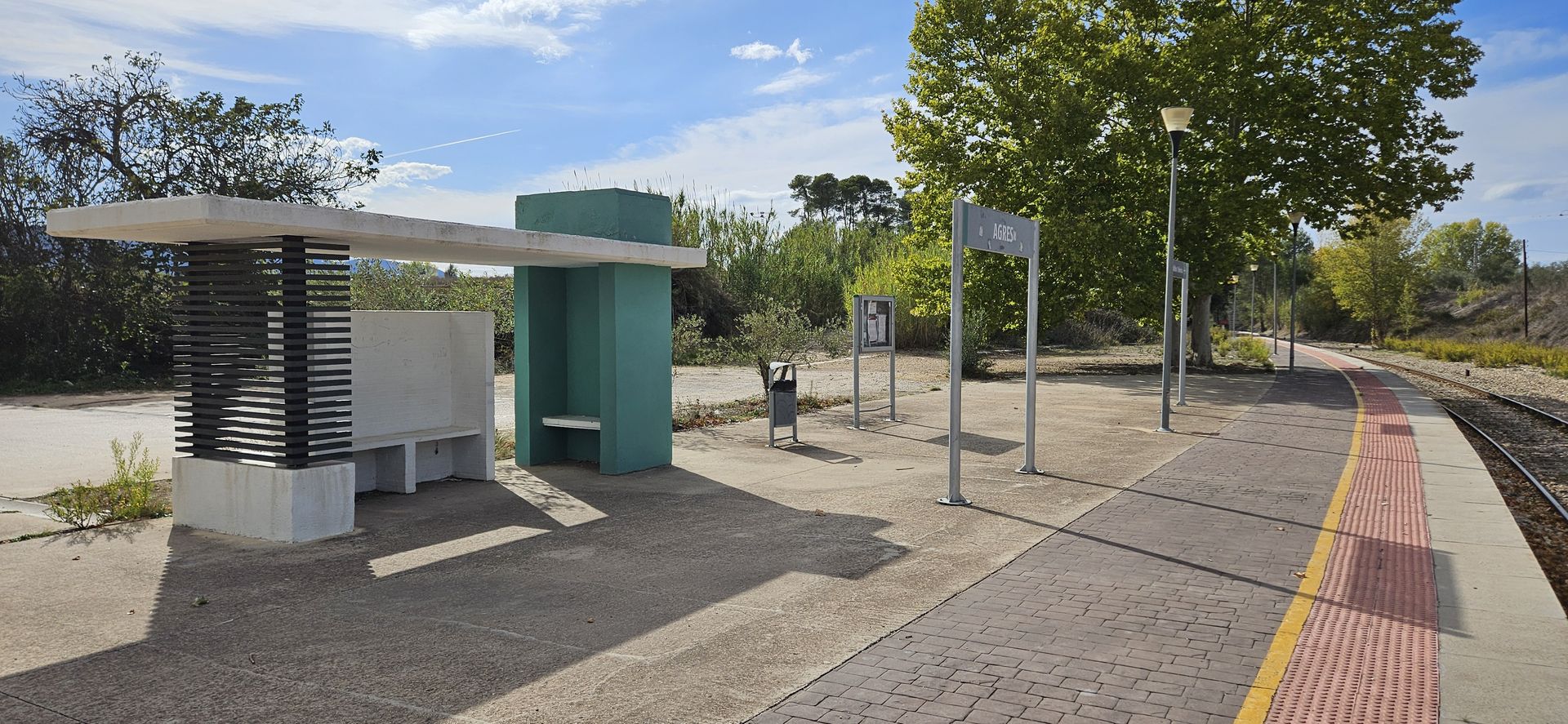
Apeadero de Agres (Alicante)
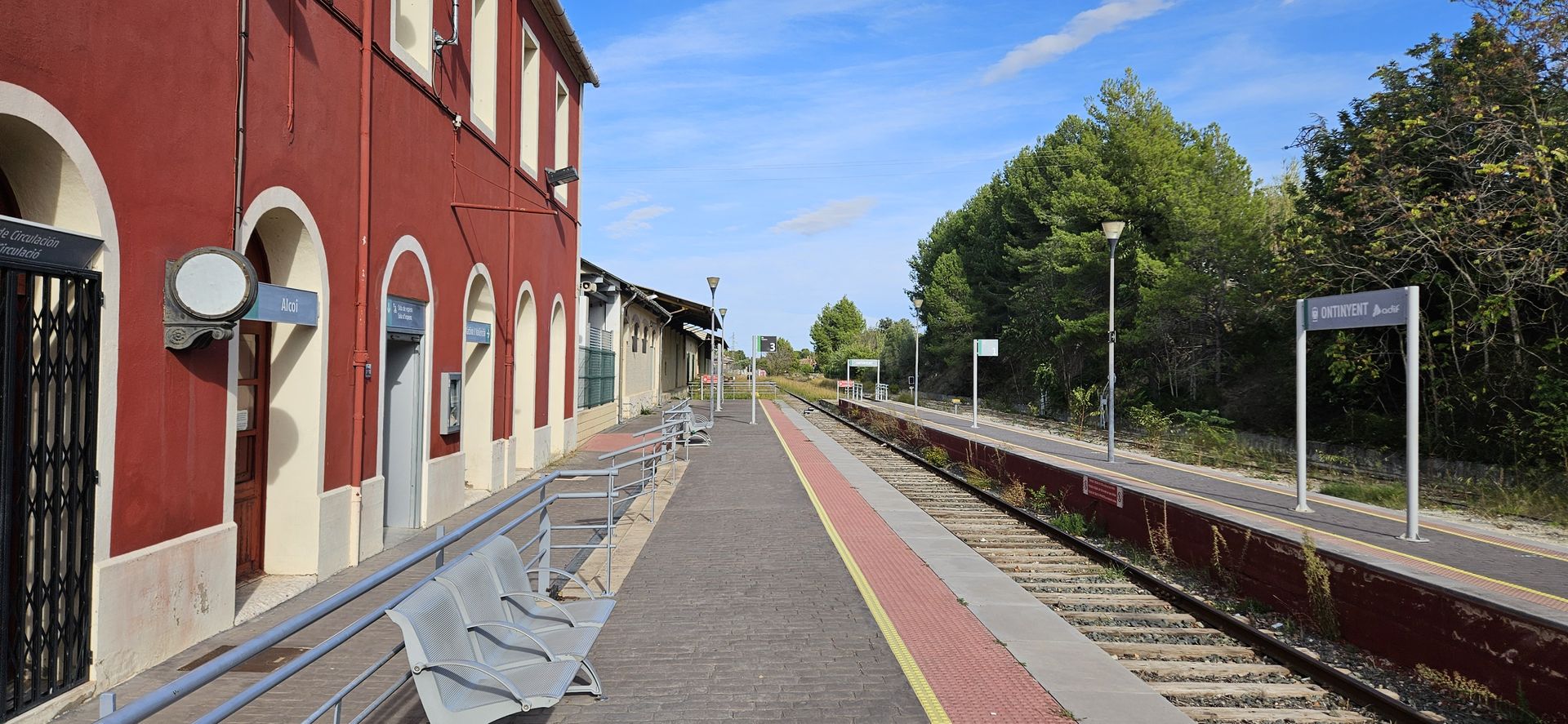
Estación de Ontinyent (Alicante)

Apeadero de Genovés (Valencia)
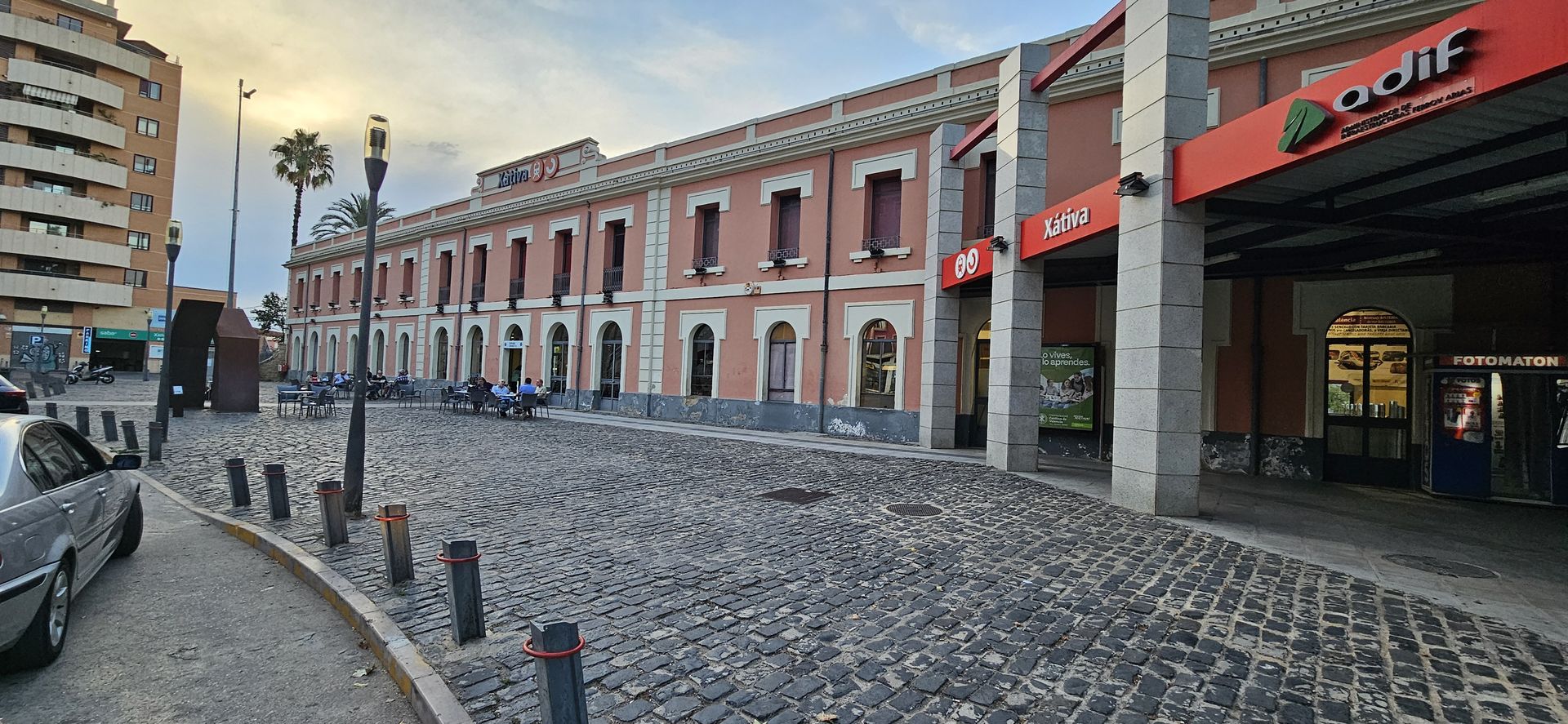
Estación de Xátiva (Valencia)
References
-
Jordi, «Trenes “Alcoyanos”», Centre Alcoià d’Estudis Històrics i Arqueològics, 2020. [En línea]. Ver referencia
-
F. M. Roda, Valencia y las Valencias: su historia contemporánea (1800-1975). Fundación Univ. San Pablo, 1998.
-
F. Comín, 150 años de historia de los ferrocarriles españoles. Grupo Anaya, 1998.
-
B. Bueno, «La línea férrea Xàtiva-Alcoy, la más lenta de España», Levante-EMV, 20-feb-2021. [En línea]. Ver referencia
-
Radio Alcoy, «Adif licita las obras de renovación de la vía del tren Alcoi-Xàtiva por más de 101 millones de euros», Cadena SER, 25-sep-2023. [En línea]. Ver referencia
-
Adif, «Adif invierte más de 101 millones de euros en las obras de renovación integral de vía en la línea Xàtiva-Alcoi», Comunicación y prensa Adif, 21-sep-2023. [En línea]. Ver referencia